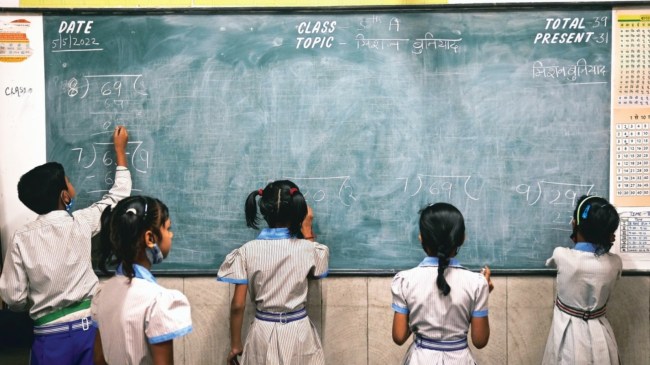Opinion Behind NEP’s success story, the real heroes
NIPUN Bharat, through a focus on foundational learning, has transformed teaching-learning
 The ASER results prove that progress is possible. With the right tools, resources and policies, India can ensure that every child, regardless of geography or circumstance, has access to quality education.
The ASER results prove that progress is possible. With the right tools, resources and policies, India can ensure that every child, regardless of geography or circumstance, has access to quality education. The results of the Annual Status of Education Report (ASER) offer a glimmer of hope. For the first time in years, foundational learning outcomes — especially in Grade III — show positive trends across Indian states. This progress is no accident. It reflects a focused effort by the Indian government to prioritise quality education.
During the recent Republic Day celebrations, education was front and centre. In the parade of tableaux, we saw symbolic reminders of India’s commitment to nation-building through education. The National Education Policy (NEP) set the stage for these achievements by emphasising the importance of foundational literacy and numeracy (FLN). But the real hero behind this success story is the NIPUN Bharat Mission.
NIPUN Bharat, or the National Initiative for Proficiency in Reading with Understanding and Numeracy, was launched in 2021 and has quietly transformed classrooms by targeting literacy and numeracy in the early grades. Consider this: The programme allocates
Rs 500 per child for teaching-learning materials (TLM), empowering schools to craft vibrant, engaging lessons tailored to young learners. For teachers, who are the backbone of this mission, the states receive up to Rs 5,000 for capacity-building workshops, along with Rs 150 for resource materials to support the classroom strategies of teachers.
States are empowered with Rs 10-20 lakh each to conduct comprehensive assessments, track the progress of learning outcomes of students and identify gaps in teaching and learning practices. To ensure seamless implementation and oversight, Rs 25 lakh to Rs 1 crore is provided for establishing robust Project Management Units at the state and district levels. This meticulous framework fuels the transformation of foundational learning.
Numbers alone cannot capture the full story. To truly understand the impact of the NIPUN Bharat Mission, we must look beyond statistics and see the children whose lives are being changed every day.
In Uttar Pradesh, Ravi Sharma, a primary school teacher, uses songs to teach mathematics. His students chant, “ek-do thaila lo, teen-chaar chalo bazaar”, learning numbers as they sway to the rhythm. Odisha’s Dhenkanal district tells a similar tale. Shragatika Ghosh, a second-grader, proudly reads Odia stories aloud, her confidence growing with each page.
The data backs up these anecdotes. In UP, ASER 2024 shows a leap in Grade III students’ ability to read Grade II-level texts — from 24 per cent to 34 per cent — and solve subtraction problems, which improved from 29 per cent to 41 per cent between 2022 and 2024. Odisha’s innovative use of colourful and contextualised workbooks has led to similar gains. Nationally, millions more children can now read and solve basic math problems.
Despite progress, foundational learning in India is still fragile. Many children struggle with more advanced concepts as they transition out of the early grades. Some, particularly from marginalised communities, begin school without the readiness or skills needed to thrive.
Systemic change takes time. As the Prime Minister remarked at the Akhil Bharatiya Shiksha Samagam, “It took four years for NIPUN Bharat to bear fruit.” To sustain these gains — and expand them — the mission’s timeline must be extended. An enhanced NIPUN 2.0 should be extended to at least 2030. This will allow interventions to take root and achieve deeper impact. It should expand its focus to Grades III–V — bridging the gap between early foundational skills and higher-order learning is essential. NIPUN 2.0 should also focus on Early Childhood Education (ECE): Investments in preschool education can set children up for success before they even enter primary school.
The ASER results prove that progress is possible. With the right tools, resources and policies, India can ensure that every child, regardless of geography or circumstance, has access to quality education. Extending NIPUN Bharat’s timeline is not just about numbers or rankings. It is about stories like Shragatika’s and Ravi’s — stories of children who discovered their potential and teachers who found new ways to inspire. The opportunity is here. India has the chance to set a global benchmark in foundational learning. But the window for action is narrow. The time to commit to NIPUN 2.0 is now.
Dhawan is founder-CEO, The Convergence Foundation. Kukreja is CEO and MD, Central Square Foundation







